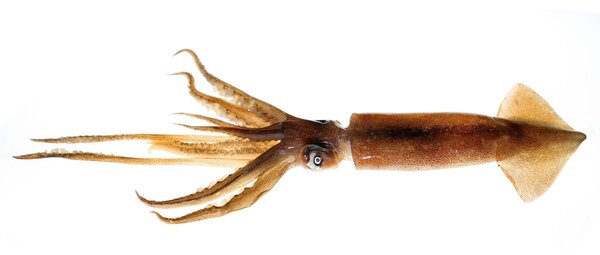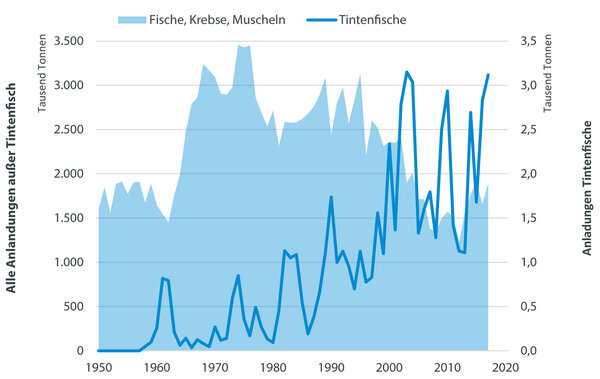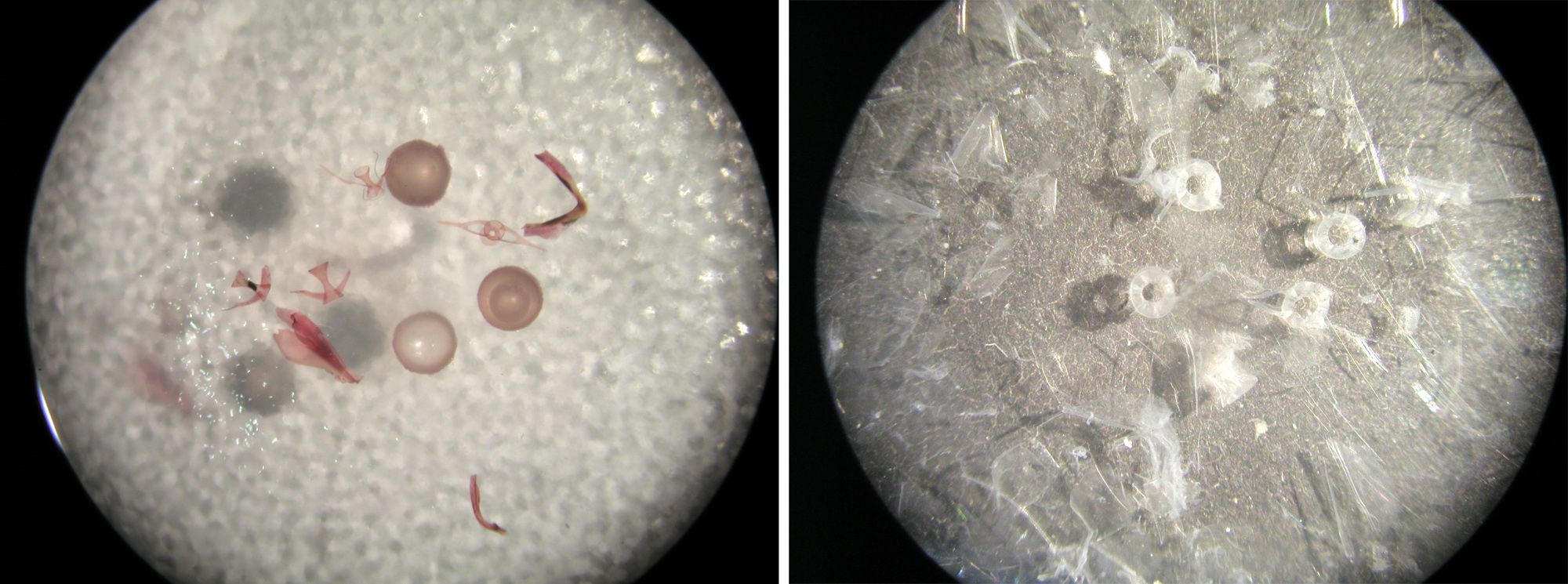Expertise
Cephalopods in climate change
Daniel Oesterwind, Anne Sell | 26.07.2023
In many regions around the world, a decline in predatory fishes and rising ocean temperatures are favoring cephalopod population trends. Even in the North Sea, traditionally not known for large cephalopod abundances, squid biomass is increasing. What does this mean for commercial fish species, and are squid themselves becoming a fisheries resource here?
Squids have been considered of secondary importance in the North Sea. However, recent research results from the Thünen Institutes of Baltic Sea Fisheries and of Sea Fisheries show that various species have expanded spatially here in recent years and have also greatly increased in biomass.
Cephalopods as winners of climate change
Cephalopods are particularly adaptable due to their short life cycle of one to two years. The research results show that the biodiversity and the distribution patterns of individual cephalopod species in the North Sea have changed significantly over the last century. A comparative analysis with historical reports showed that some species that in the early 20th century migrated into the North Sea only to spawn or forage, now live here permanently. This is true, for example, of the longfin squid Loligo forbesii and Alloteuthis. The short-finned squid Todaropsis eblanae and Illex coindetii, which are also permanently present today, were only described as accidental guests in the North Sea 100 years ago. Scientists at the Thünen Institute have been able to prove that these squids are now even reproducing here and thus establishing their own North Sea stocks.
Two consequences of the increased occurrence of squids are of particular interest to the Thünen researchers: on the one hand, a more intensive, and currently still completely unregulated, fishery for squid is developing in the North Sea. At the same time, it is important to understand what changes are occurring in the food web as a result of the squid's increasing predation pressure.
Cephalopods as a fishery resource
Official reports from fisheries document a roughly three-fold increase in cephalopod landings in the North Sea over the past 40 years. While they represent only a small portion of the targeted resource compared to fish, their landings now reach up to more than 3,000 metric tons annually.
The demand for squid products is also increasing; North Sea squids are also already offered in some restaurants as regional culinary products. However, squids are not covered by the European "Common Fisheries Policy", so fishing in the North Sea has so far been unregulated. Due to their steadily increasing importance as a fishery resource, Thünen scientists are involved in international collaborations to develop sustainable fisheries management for European seas, including the North Sea. The short lifespan of these invertebrates leads to special challenges: Fisheries management must be designed to be adaptable and effective in the short term. At the same time, it became apparent that genetic information alone is not sufficient to identify separate stocks. A combination of genetics and biological parameters is needed to define management units for future fisheries regulation. Using alternative indicators, such as trends based on standardized catches from monitoring and commercial landing data, scientists currently estimate the status of squid living in the North Sea to be increasing.
Ecological consequences
As pure carnivores, squid occupy an ecological niche in which they compete with other predators for prey. To learn how the observed increase in cephalopod biomass and the establishment of the shortfin squid Illex coindetii increase the feeding pressure exerted by squid in the North Sea, the Thünen scientists analyze their stomach contents in different ways. Although classical optical stomach content analyses prove difficult because squid immediately crush their prey, the scientists have been able to show from hard structures, such as vertebrae or otoliths of fish prey, as well as squid beaks, that some larger squid feed on commercially exploited fish such as cod, whiting, herring and sprat, while some feed cannibalistically as well.
Genetic metabarcoding is now being used to capture the biodiversity of the prey range as fully as possible. This method records the DNA traces of the animals eaten, even if they are no longer visually recognizable in the stomach. In this way, the Thünen researchers were able to show that individuals of Illex coindetii in the North Sea not only eat various other squids such as cuttlefish and Loligo species, but also hunt a wide variety of fish, including, in particular, the cod relatives Norway pout and whiting, as well as sprat, herring and sandeels, but also mackerel and European horse mackerel.









